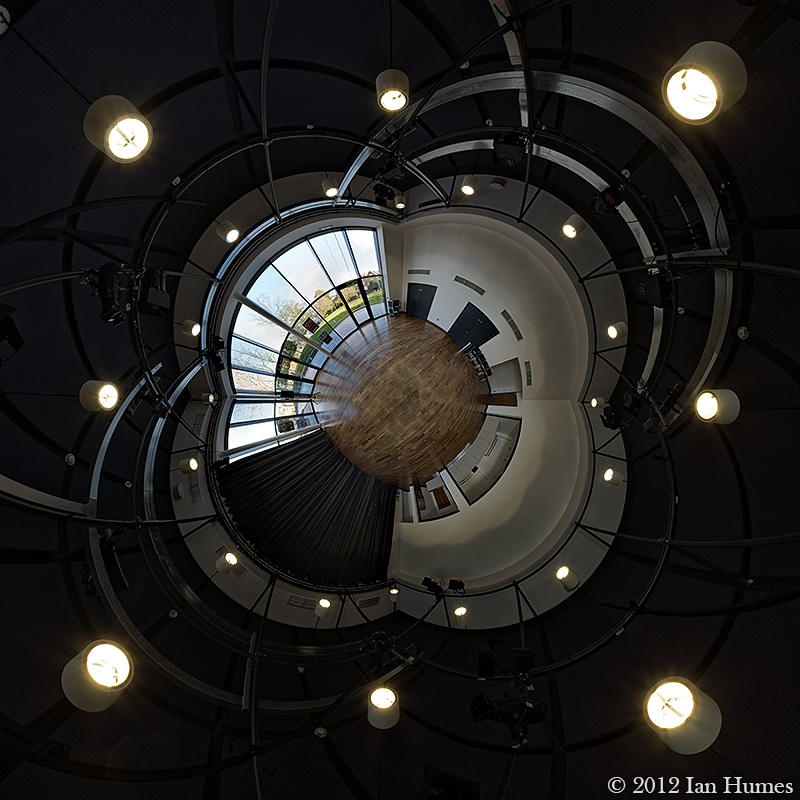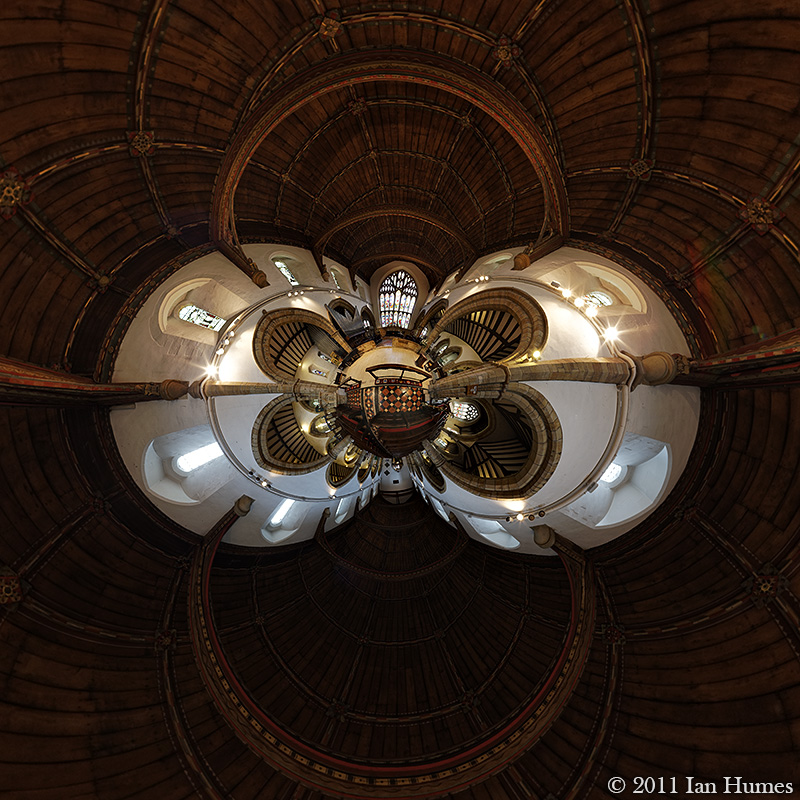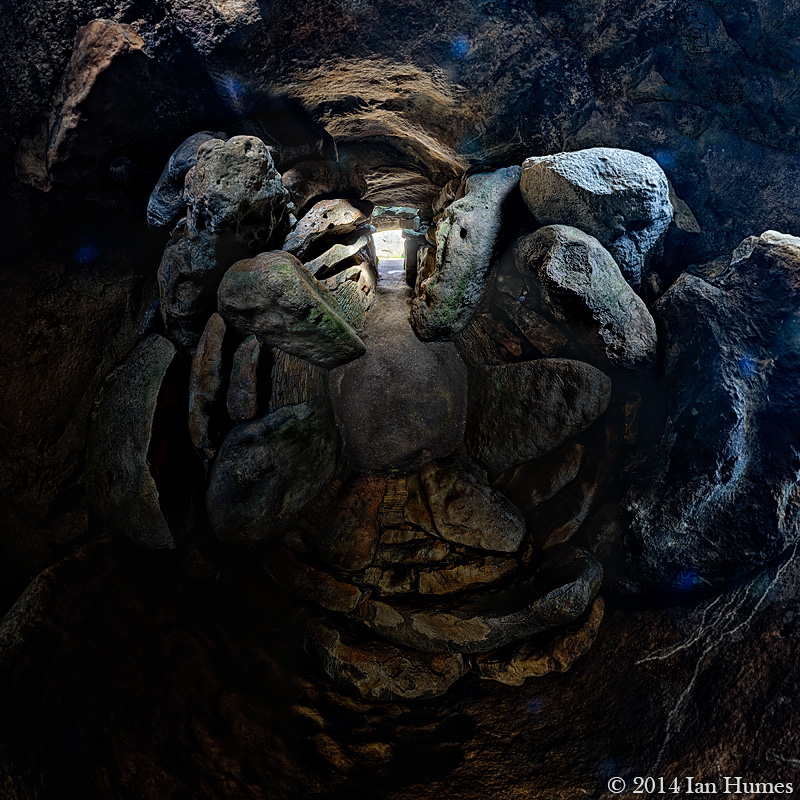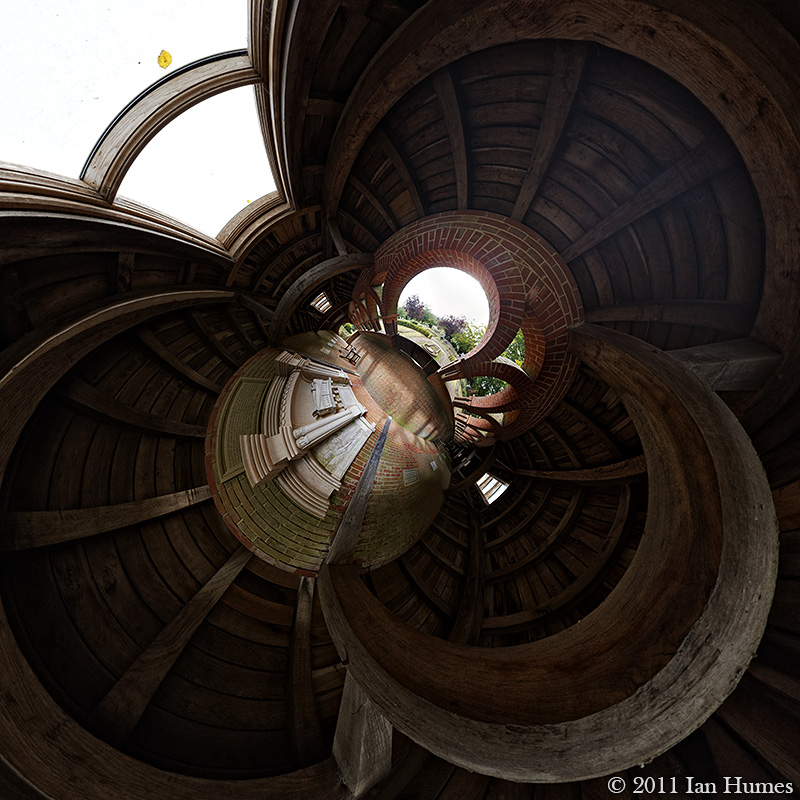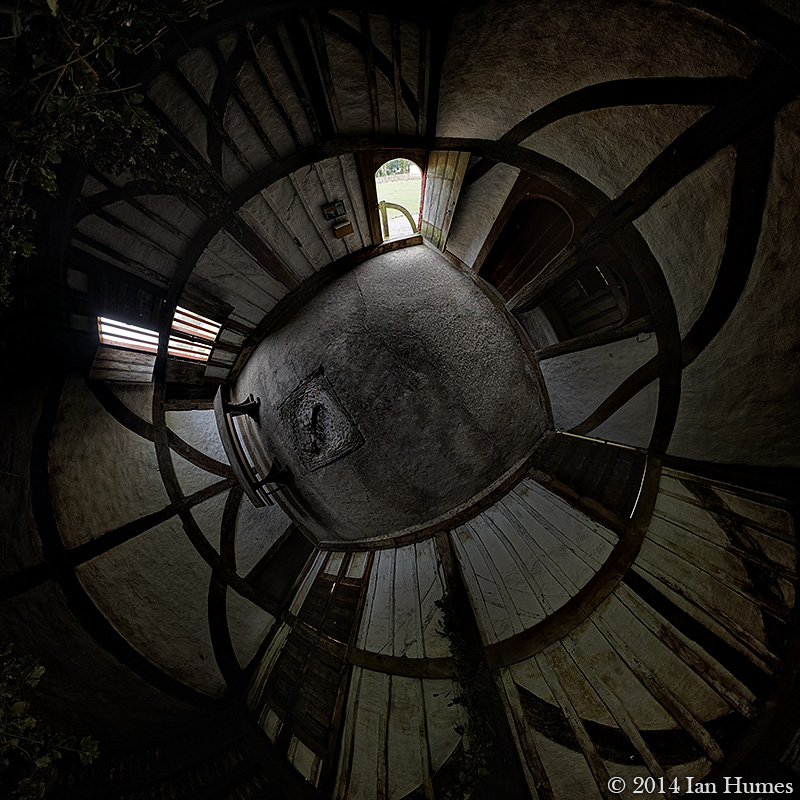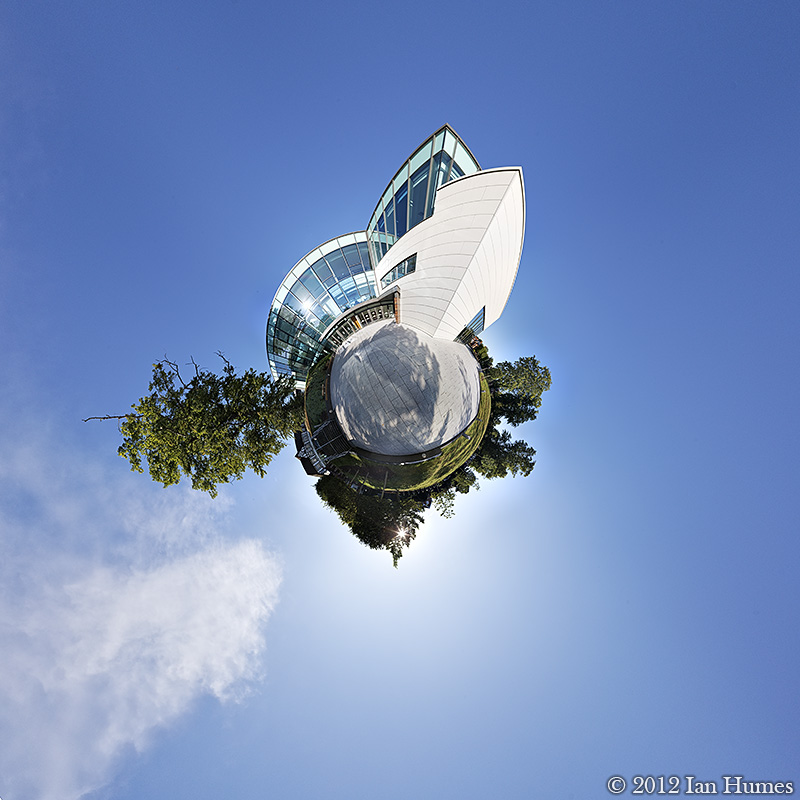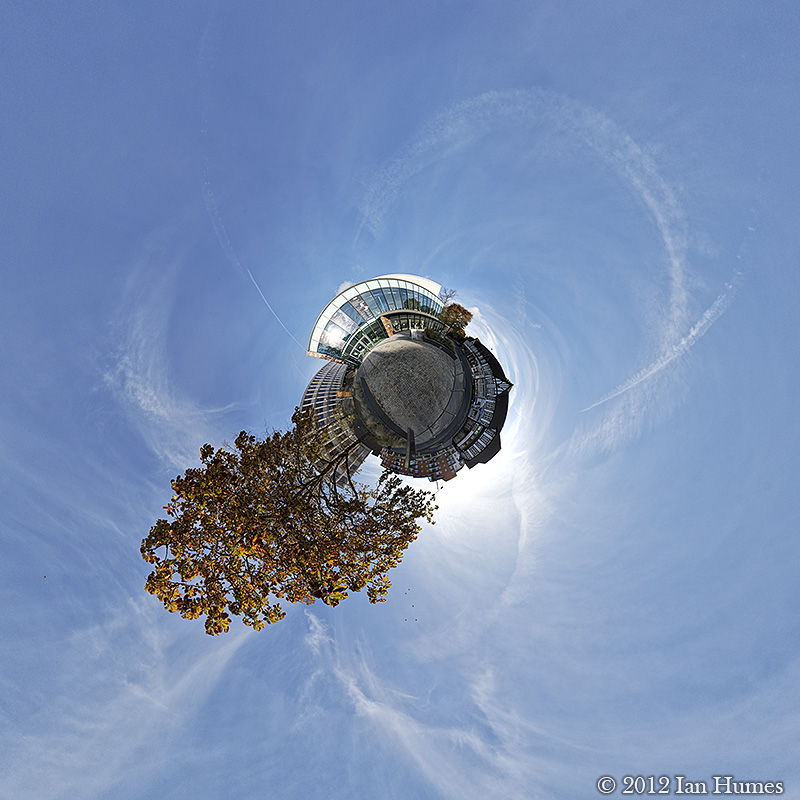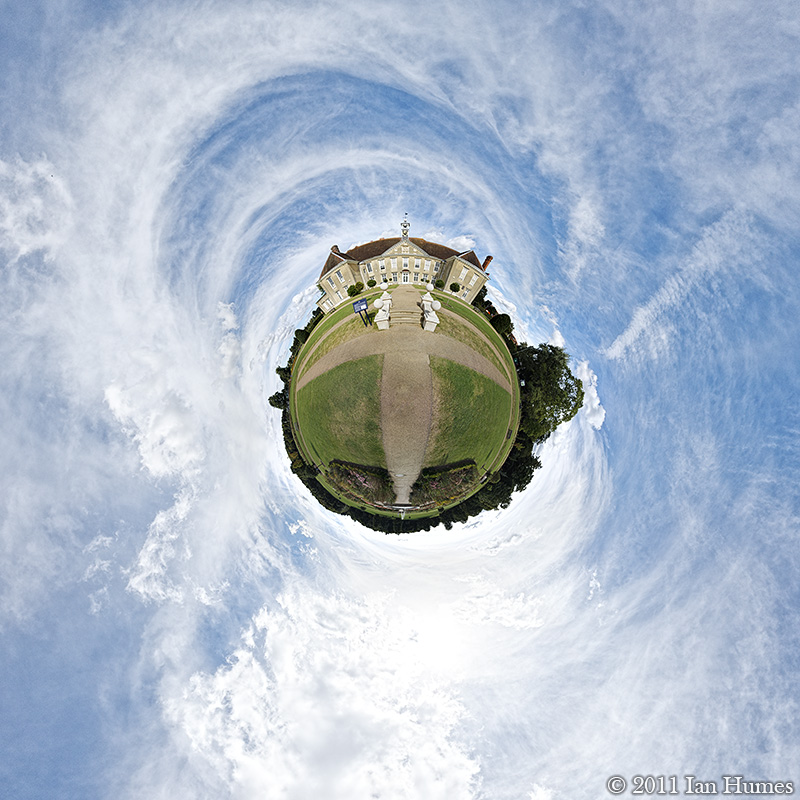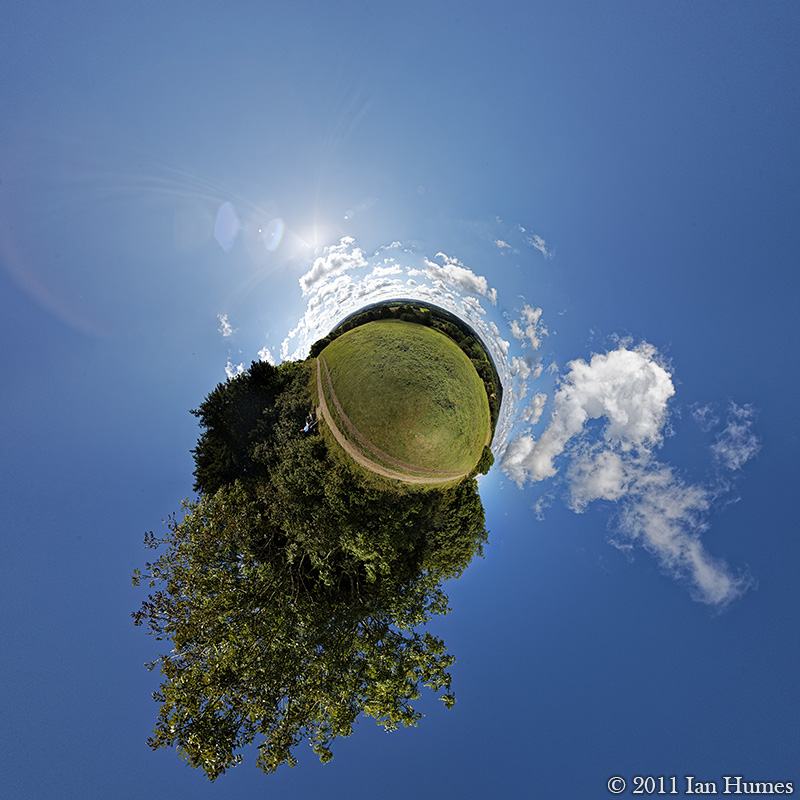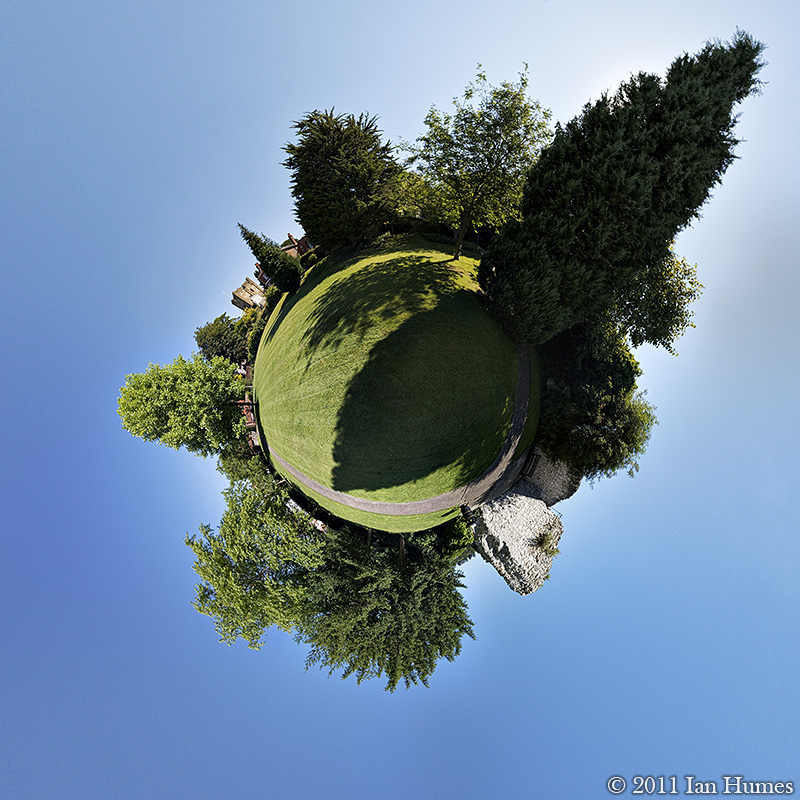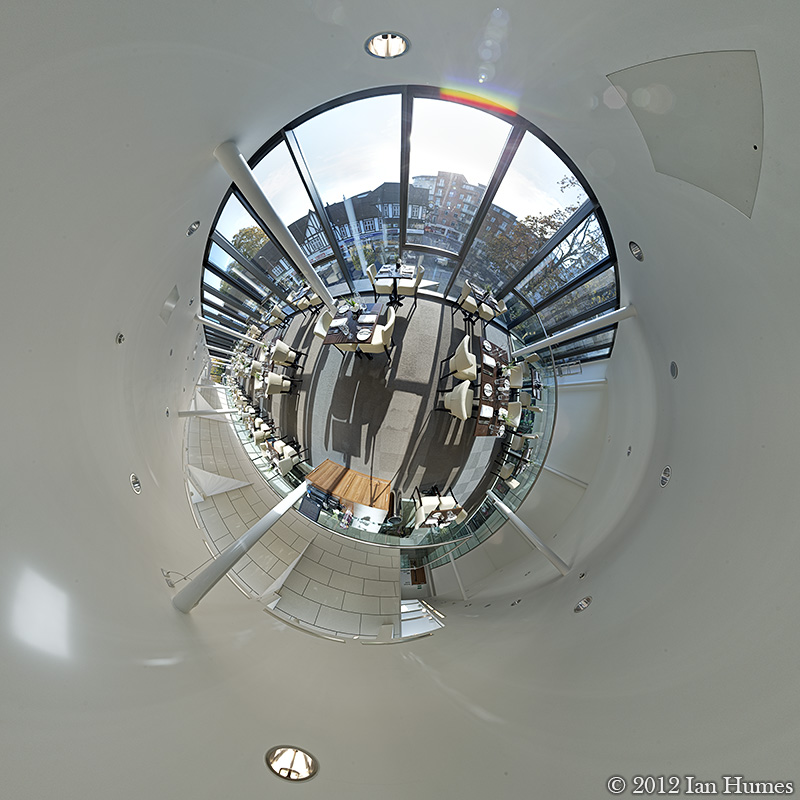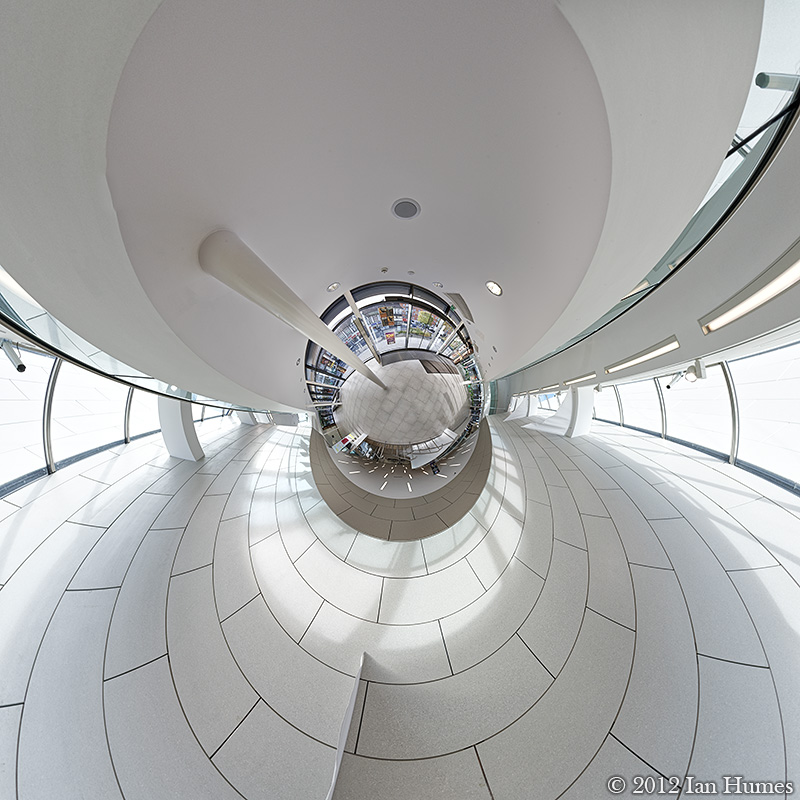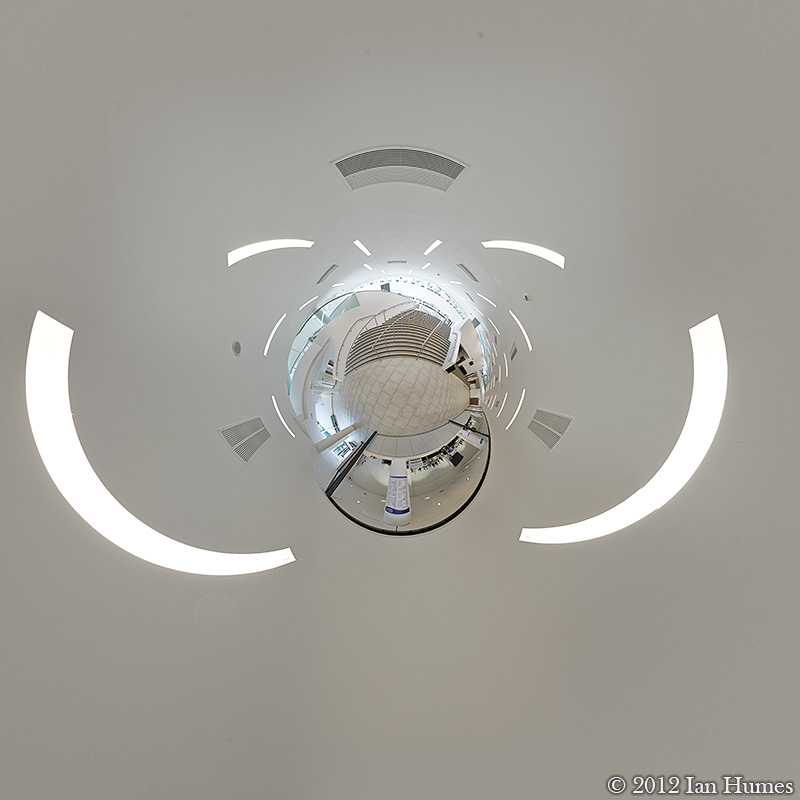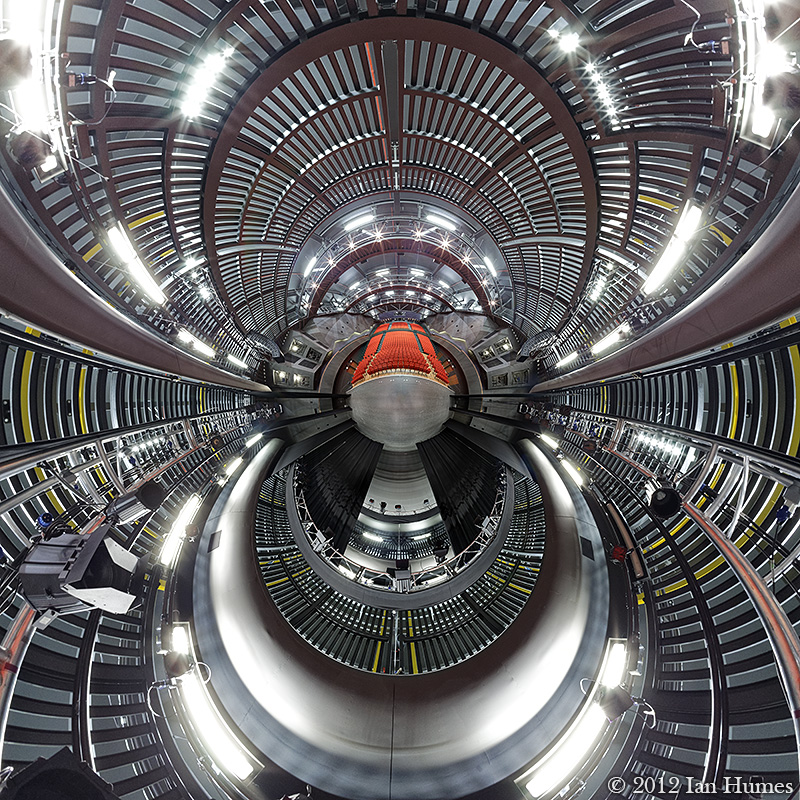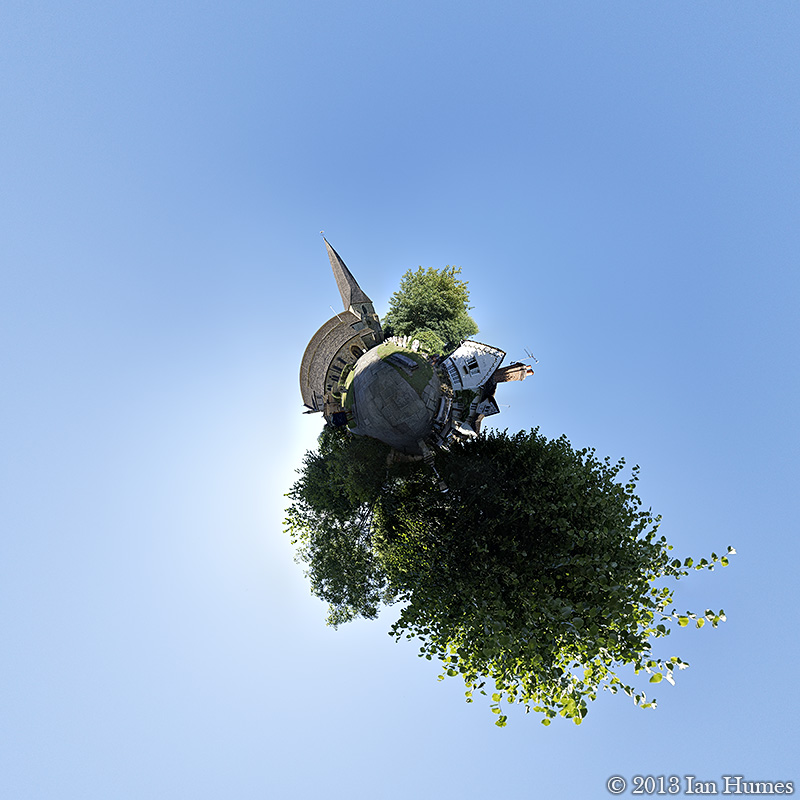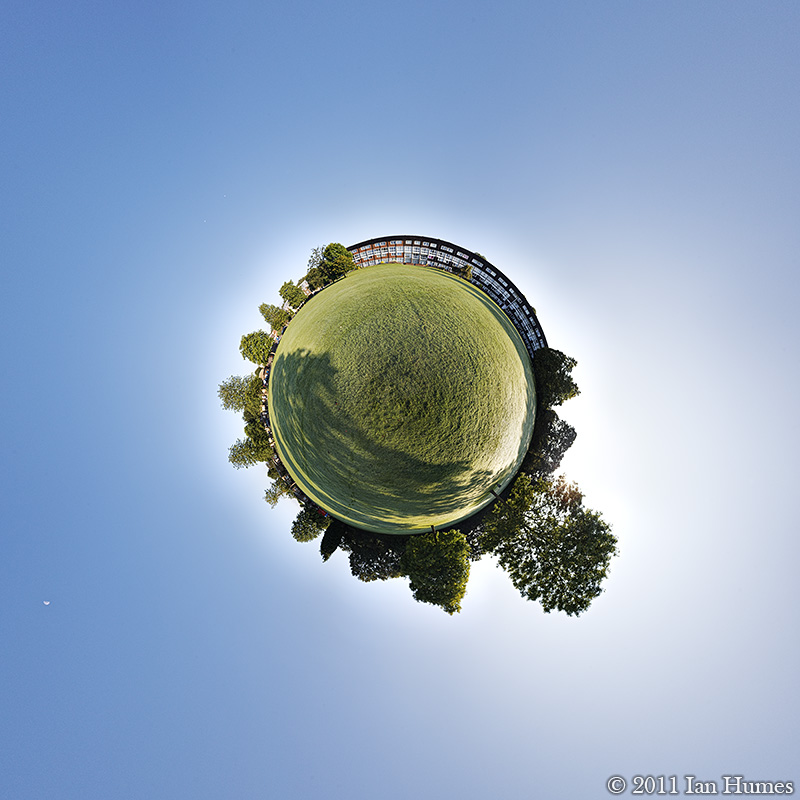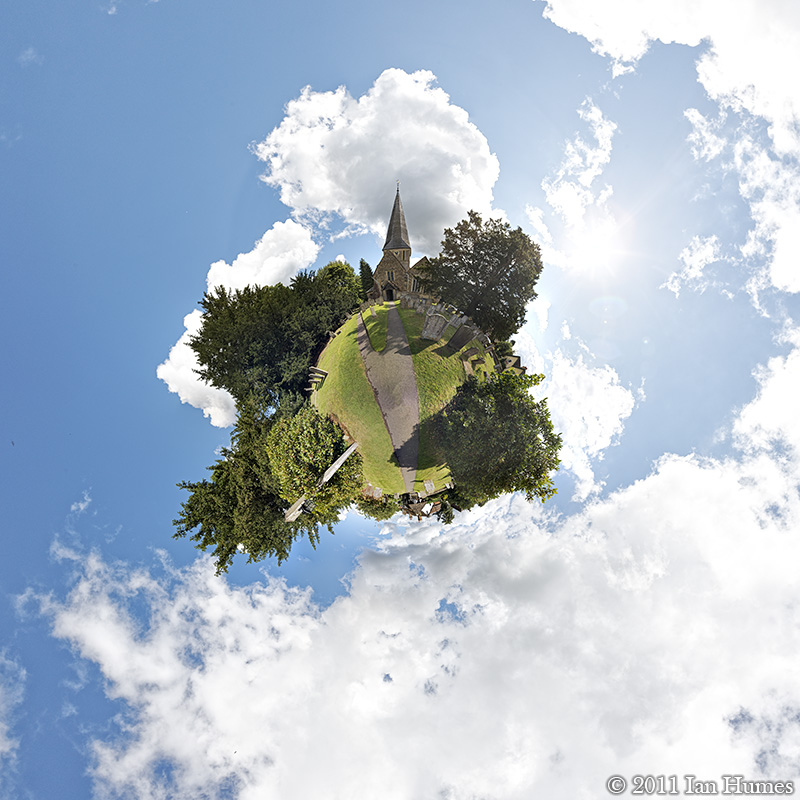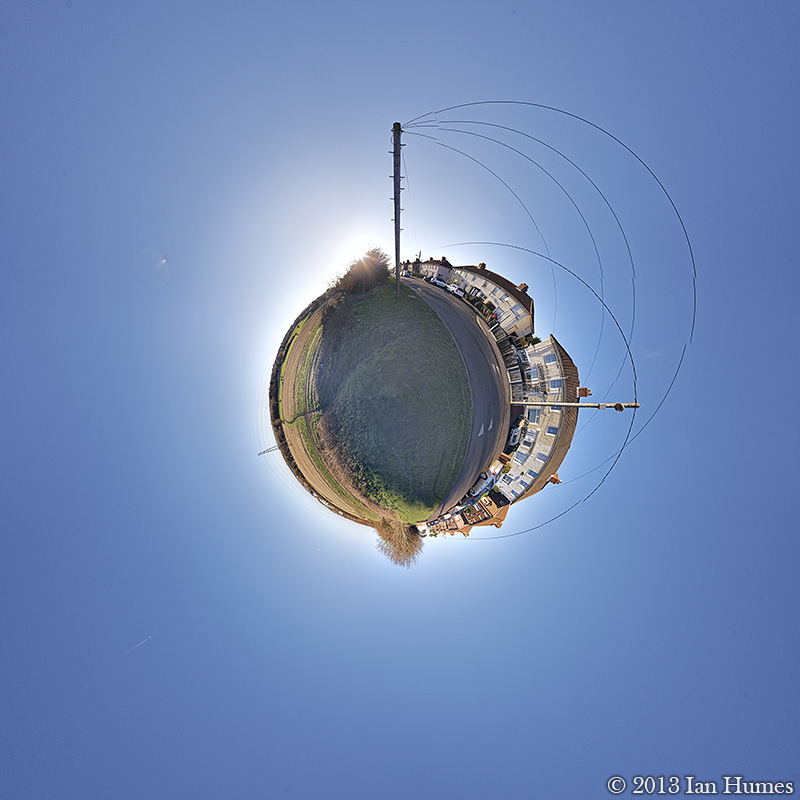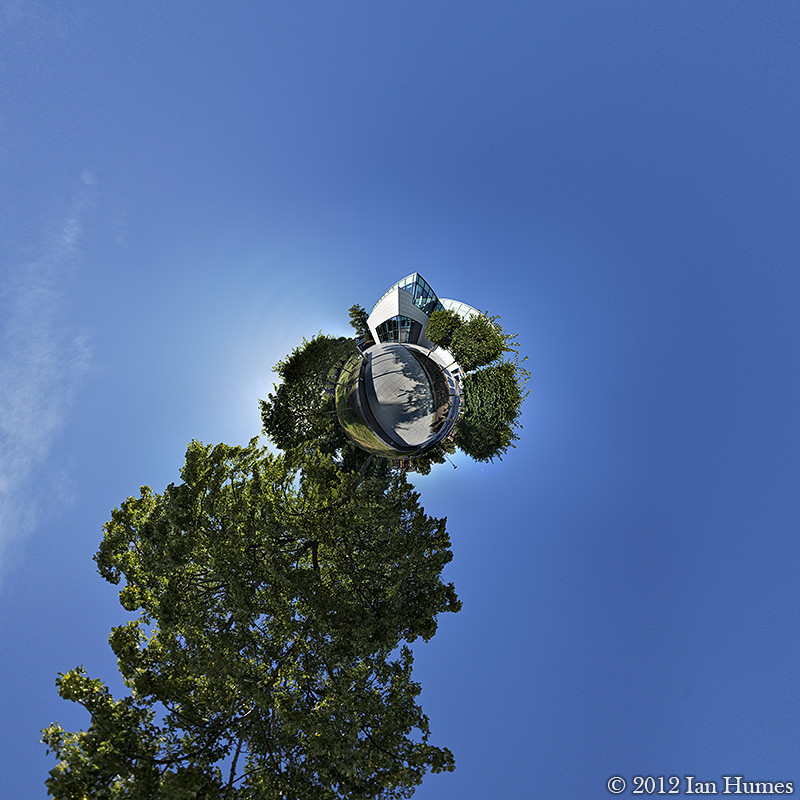Little Planet Projection
Using the little planet projection creates interesting new viewpoints and perspectives using previously created spherical panoramic views. Even though the camera was less than 2m above the ground for all of these shots the little planet projection gives the impression of an aerial photograph. To see an explanation of the Little Planet projection see the bottom of the page.
Little Planets
Little Planet Projection
To understand the little planet projection it helps to think about a "normal" panorama. In a normal stitched panoramic image the camera takes a photograph (a planar image) then is rotated and takes another image (that partially overlaps the previous image), this is repeated until you have enough photographs to create your panoramic image. When we stitch them together the images are distorted to change them from multiple planar images into a single cylindrical image (this causes horizontal lines to bow up or down (see below)). If this stitched image was printed out and placed in a circle (to mimic the cylindrical projection) and then viewed from the centre of the circle the curved horizontal lines would once again appear straight to the viewer. Looking towards the glazed corner of the room, if we split the panorama behind us (by the door) we can lay the panorama flat so that there is 180 to the right of the glazed corner and 180 to the left. This is what happens with the little planet projection except instead of un-curving a cylindrical projection we are flattening out a spherical projection. If our image was captured as a spherical panorama and projected onto a globe that was sat on a table and we took a 1 slice from the north pole to the south pole and laid it flat then moved round and took another slice and repeated until we had flayed the surface off we would have 360 thin slices radiating from the south pole. If we now allow the slices to stretch radially as they move further away from the south pole until they meet their neighbours this is the little planet projection.
Above you will see a cylindrical projection of the G Live studio which was exported from the spherical projection used to create the first Little Planet above. I draw your attention to the floor, four walls, two of which are glazed, one partially covered by blackout curtain and then the lighting rig above which consists of 25 lights in a 5x5 grid. In the little planet the wooden floor is in the centre of the image, surrounded by the walls which are surrounded by the lighting rig starting with the 16 lights nearest the walls then the 8 lights inside those and the last light directly above the camera position (which is not shown but is just outside the edges of the image).
Interested in learning more?
If you've looked through my site and have any questions, I'd be glad to help you. You can contact me on my mobile on 07801 103635 or send me an E-mail and I will get back to you as soon as I can.


